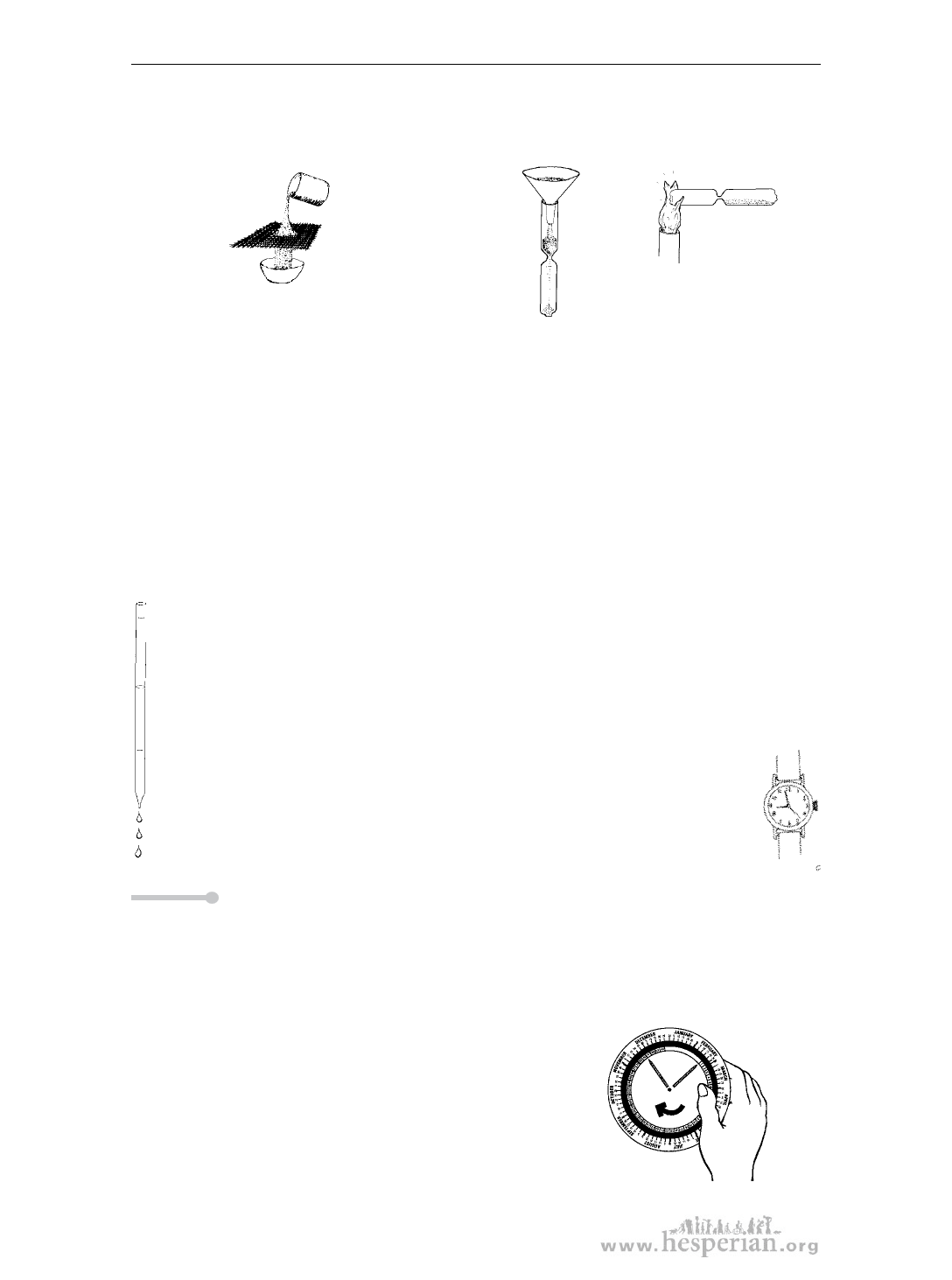
Chapter 25: Homemade tools and teaching materials
4. Wash some fine sand to
remove the dirt. Dry it in
the sun, and sift it
through a very
fine strainer.
Then heat the
sand to
remove
moisture.
5. Put just enough sand in
the tube so that it takes
exactly 1 minute for all of
it to run from
one part to the
other.
Use someone’s
watch with a
second hand
to check this.
6. Seal the other end
of the tube.
An easier method is to use a “soft glass” test tube, or a blood collection tube.
Make a thin neck in the middle of the tube using a hot flame. You do not need to
melt the open end — simply seal it with a cork or rubber stopper. This timer may
be less accurate in a moist climate.
Do not be surprised if you have to make a sand timer several times before you
get it right. If the sand sticks, find a smoother, finer sand, and be sure it is
absolutely dry. Be sure you have the right amount of sand before you seal the tube.
Protect the timer by keeping it in a box padded with cotton or cloth. It can break
very easily at the neck.
Water timers
Water timers are easy to make but less accurate than sand timers.
Use a glass or plastic tube. The longer and thinner the tube, the more
accurate it will be as a timer.
To form a narrow hole in a glass tube, hold it over a hot flame, then
stretch, cool, and break it.
Hold the tube upright and fill it with water exactly to the top.
Using a watch with a second hand, measure how far the water
level drops in exactly one minute. Check this a few times, and then
mark the spot with ink, nail polish, or a piece of tape.
Note: Sometimes a water or sand timer will get partly clogged and
give a false reading. So it is a good idea to check your timer against a
clock or watch from time to time.
Homemade due date calculator
See page 527 for a tool you can make that shows a
woman’s likely due date if you know the date of her
last monthly bleeding.
444
A Book for Midwives (2010)